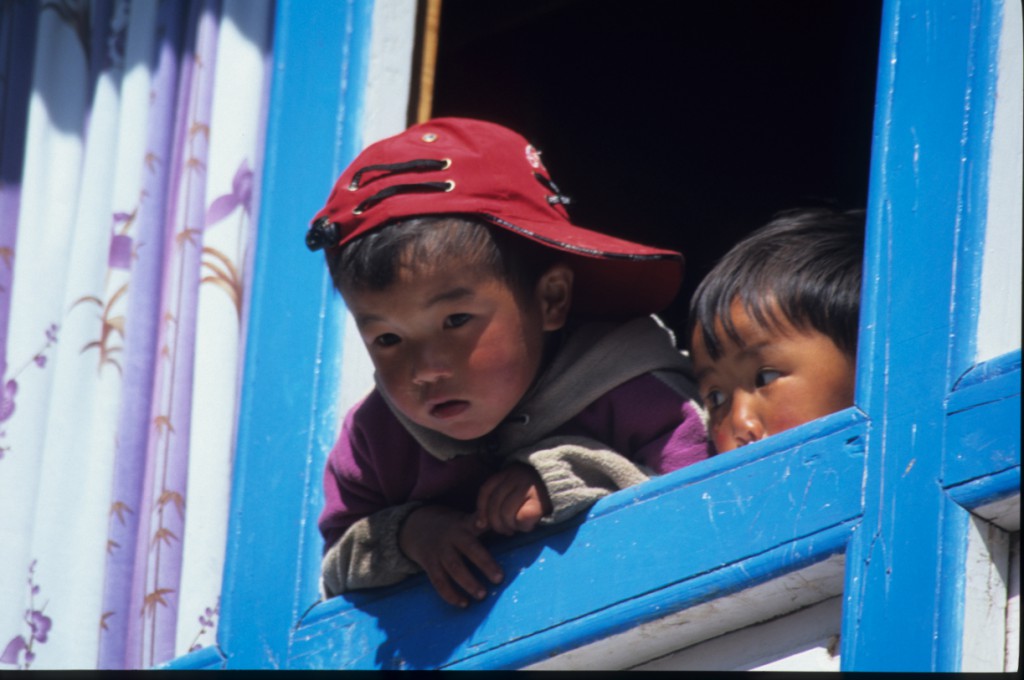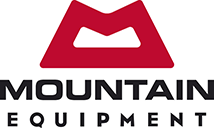Supported by
Mount Everest Foundation, British Mountaineering Council, Alpinist Magazine, Mammut and DMM.
Dates: 29th October 2004 – 4th November 2004.
Location: Khumbu Nepal.
Climbers: Nick Bullock and Nick Carter.
Abstract: One attempt on The Northeast face of Teng Kangpoche (6500m) Khumbu. Nepal.
1st Ascent of Northwest face. Edge of Darkness, TD+/ED1
Introduction:
After attempting this peak in 2003 I was determined to try again in 2004. This time Nick Carter was recruited and we arrived in Nepal a month earlier than the previous year in an attempt to foil the high winds that troubled us so much in 2003. The initial plan was to warm up by completing my solo line, Love and Hate on the Northeast face then move on to the Northwest face making the first ascent of the face with a traverse over the summit and descent via the Northeast face. Things in the mountains do not always go to plan!
Expedition Diary:
29th September-Fly from Heathrow
30-Land in Katmandu.
2nd-October November-Interview with Ministry, meeting with agent, meeting with Liaison Officer, shopping for food.
3rd-Fly to Lukla, walk to Benkar.
4th-Walk to Namche Bazaar.
5th-acclimitisation around Namche, interview with SPCC.
6th-walk to Thame.
7th-walk to Thyongbo, check out NW Face, continue to height of 4800m and bivvie.
8th-Acclimitisation walk cont to 5300m and bivvie
9th-Return to Thamay
10th-Rest in Thamay and kit sort.
11th-Walk up to bivvie beneath Northeast Face.
12th-Attempt to start to climb Northeast Face at midnight but rain and snow made us reassess our plans. At 8am return to Thamay.
13th-Go down to Namche Bazaar.
14th-return to Thamay in poor weather.
15th-Stay in Thamay, waiting for the new snow to settle.
16th-walk to bivvie beneath the Northeast Face.
17th-Start to climb the Northeast face at midnight.
Avoid death somehow for 12 hours while attempting to repeat my solo climb without setting too many avalanches off, and return to Thamay after retreating from a high point of 5400m on the Northeast face.
18th-go down to Namche Bazaar in an attempt to keep us away from temptation.
19th-Stay in Namche.
20th-Walk to Thamay.
21st-Walk to Thyonbo and stash kit beneath the Northwest Face.
22nd-Leave Thyongbo at 4pm, check slope beneath Nw Face, and bivvie.
23rd-Start to climb at 2am from a height of 4500m, reaching a height of 5900m by 1230, 1300m of ascent. Dig a ledge and rest for the rest of the day.
24th-Start to climb at 7am. The final 300m takes 12hours to climb, pitching the climbing. The summit ridge is climbed to and reached at 7.30pm at a height of 6210m. A ledge/hole is dug beneath a mushroom on the ridge, where the night is spent.
25th-A controlled descent of the Northwest Face is made in rapidly worsening weather. The base of the face is reached by 6pm and Thyngbo is crawled into at 8pm.
26th-Return to Thamay.
27th-Return to Namche.
28th-Stay in Namche, interview with the SPCC.
29th-Walk to Phacting.
30th-Walk to Lukla.
31st-Fly to Kathmandu.
1st November-interview with Ministry.
2nd-Interviews and start the formalities to recovering the $1000 garbage deposit.
3rd-Clear the garbage deposit, meeting with agent.
4th-Leave Kathmandu, fly to Heathrow
5th-Arrive at Heathrow.
Travel:
Both of us travelled together from Heathrow Airport by Gulf Airlines. A good service with one stop in Abu Dabu, arriving in Kathmandu at 5pm. No problems.
Internal flights were taken from Kathmandu to Lukla. These services are very hit and miss, as flights are dependent on the weather and demand. Sita Airlines were used. On the return we rang ahead from Namche as we were flying out earlier than the dates on the ticket. This is not really a problem and even if you don’t ring ahead the wait should only be for a day in Lukla. Although if the weather delays flights you could be there a while! An internal airport tax has to be paid of 165 rupees and excess baggage for anything over 20kg.
Environment:
Thyongbo
Teahouses were used throughout the trip instead of setting up a Base-Camp, thus reducing any impact on the area in the Thyongbo region. Here a very small village exists and a half built lodge. The local people live a very simple pastoral existence herding Yak and living off the land. There are no trees and the landscape is very baron. Steep slopes and the mountains either side of the valley make it a cold place, which sees the locals moving to Thame for the winter months.
Rock:
The rock encountered on the North of Teng Kangpoche was typical loose limestone covering swathes of the massive face. Last year the rock generally took good protection, unfortunately the line chosen this year was more in the centre of the face and the rock was extremely compact and crumbly. Protection was very difficult to find.
Snow and Ice:
The snow was generally good neve especially in the runnels caused no doubt by the constant debris pouring down the line. In the larger bays and slopes, the snow was less consolidated turning to deep powder. Ice was generally sparse, thin and fragile. Although when the need to dig something for protection arose the ice was often good beneath the deep layer of snow.
Weather:
In general throughout the whole trip the weather was unsettled. Clear skies in the morning would turn into cloudy afternoons then snow or rain would fall through the night. Most days saw precipitation of some sort. On occasion it snowed or rained heavily for the whole day and into the evening. Only one period of clear weather, which lasted for 5 days occurred for the month. It was in this period we managed to climb.
The temperature when we did climb was extremely cold. Hands and feet had to be constantly warmed to avoid frostbite. In several expeditions taking place in the Khumbu this year there have been reports of frostbite due to the low temperature, including helicopter removal with climbers suffering severe frostbite.
Waste Management:
A minimal approach was adopted by having no base camps and only using lodges for all attempts. On the hill all packaging and waste was carried back and taken back to Namche and Kathmandu.
Climbing:
We made one attempt on the Northeast face and one attempt on the Northwest Face. The plan had been to Climb the Northeast Face by repeating my solo climb of 2003. Where I had to stop, approximately 200m beneath the summit due to crevasse danger in 2003 we intended to continue thus making the first official ascent of the summit. In doing this, the idea then, was to check the West ridge from the summit, for the Northwest Face attempt and to descend via the line already climbed on the Northeast Face and equip the descent for a possible traverse of the summit from the Northwest Face ascent! We didn’t count on the Northeast Face being more difficult than the Northwest Face due to the conditions!
Starting to Climb the Northeast Face in the dark the amount of snow on the face was not apparent. The condition of the slope
was considered risky, as it was evident that there was a lot of slab, but we continued to climb thinking the slope would improve the higher we climbed. It didn’t! In fact with an increase in angle of the slope and with more runnels where a deadly layer of slab formed between flutings, the whole situation rapidly became treacherous. At a height of 5400m after triggering two avalanches we decided enough was enough and made a not so hasty retreat by roped down climbing. We spent 12 hours on the Northeast Face expecting at any point to be avalanched. It was a very relieved pair that made it to safety at midday.
After our hair-raising attempt on the Northeast Face it was with trepidation we approached the Northwest Face. Imagine our utter amazement on finding nèvè on the snow cone at the base of the climb.
Finding the snow conditions were acceptable, we continued to climb through the night, simu-soloing, following deep runnels furrowed by spindrift and hemmed in by rock-walls. The runnel had regular steps of Scottish Grade 111 and was interspersed with snow slopes of Scottish grade 11, much resembling Tower Gully on Ben Nevis but on a grand scale.
At the top of the runnel section the slope opened out with patches of nèvè, deep snow and powder. The steep-steps increased in regularity. These steps were approximately 65-70°, with the average angle of the face at approximately 50-60°
A slight left to right line was followed.
At daybreak we continued a more direct line following much the same type of ground as below. The weather at this point was very cold and clear, causing some concern. Even with the warmest boots and gloves, feet and fingers had to be constantly warmed to reduce the risk of frostbite
At 12.30 pm, a height of 5900-meters had been reached, 1300 meters of climbing in 10 hours. Above the summit ridge was 300-meters away but with what appeared to be steeper, more technical ground above, and with no obvious place for a bivvie site we decided to take an early finish and cut a ledge from the top of a snow fluting. At 3pm we settled down for a rest and some food. Neither of us carried a bivvie bag but we did have a prototype single-skin pertex bivvie tent supplied by Outdoor Designs.
At 7am on the 24th we started to climb and the angle of the face increased immediately, approximately 70° on average. Rock belays were sought on the right of the line, although due to the compact nature of the rock these were difficult to find. The climbing also became more tenuous with the increase in angle and the snow took on a very Peruvian feel. Protection on lead was virtually non-existent. Occasionally a driven-in ice hook or a dug out ice-screw could be placed if the ice, covering steep slabs was thick enough. Lengthening sections of 80° powder-covered, hard-ice now had to be climbed. Scottish 1V.
The grade of the climbing bared no real relevance at this point, as within seconds of climbing one of these steep sections, hands and feet were wooden, making the whole experience more interesting and a race for a rest point where frozen digits could be re-warmed became the crux of the pitch.
A long, rising traverse right, (approximately 50-meters beneath the summit crest) was led by Carter at a grade of Scottish 1V 80°.
Bullock led the final pitch which consisted of much digging, chopping, burrowing and levitation. (Ungradable-one for the Peruvian connoisseur) 85°. Finishing on the crest of the West Ridge in the dark at 7.00pm.
A shelf/cave beneath a mushroom was cut on the crest of the ridge, completing the task at 8.30pm. The height was 6210-meters and this final 300-meters of climbing had taken 12 hours.
While we had been climbing through the second day it had become obvious that the West ridge was going to present some very special techniques to try and forge a way onto the summit proper, (this was easily seen as we were now higher than the lowest point of the West ridge) which stood approximately 1 kilometre away. With this in mind we decided to leave this joy to some other more deserving party.
After a particularly cool evening (there was no room to construct a ledge big enough for the tent, so opted to sleep without any covering apart from sleeping bags), the descent was started at 7am on the 25th.
The descent line was virtually the line of ascent, with some straightening out. The top half of the face was descended by abseil with rock, ice and snow anchors all utilised.
The weather chose this point to turn causing some concern as large powder avalanches poured down the face. (Bullock was buried by one such avalanche while hanging from the end of the abseil rope having unconnected from the end and about to start down climbing).
Fortunately the snow abated but the slopes now gave cause for concern as they were freshly loaded with powder snow. The bottom half of the face was down climbed with speed, and it was with relief we reached the base, 12 hours from the start of the descent at 7pm.
An overall grade for the route was thought to be TD+/ED1 Scottish 1V-1600 Meters.
Equipment:
Clothing:
For Bullock Mammut supplied clothing, rucksacks, sleeping bags, ropes. DMM supplied technical climbing gear. All proved ideal and well up to the job asked. Carter not having a kit sponsor had a mish-mash of clothing and kit.
Stove and fuel.
A hanging markhill cookset was used with a MSR gas burner. Butane/propane gas was used.
Food:
Most food was bought in Kathmandu and Namche. Some favourites were bought in Britain though this isn’t necessary.
Finance:
Below is a summary of the finances for the trip. We were fortunate to receive good grants from The MEF/BMC, The Sports Council and Alpinist Magazine, which eased the financial burden considerably.
Income: BMC/MEF Grant. £1675.
Alpinist B-Team Grant £1600.
Personal cont’s. £1000.
Total £4250
Expenditure:
Flights: £1200
Insurance: £400
Internal Flights £200
Liaison Officer £750
Agent Fees £150
Peak Fee £750
Food and stores £350
Accommodation £350
Porter/equipment£100
Total £4250.
Thanks:
Thanks to The Mount Everest Foundation, The British Mountaineering Council, The Sports Council and Alpinist Magazine for financial support. Without you this trip would not have taken place.
Thanks to Mammut and D.M.M. for generous supply of kit.
Nick Bullock: nickbullock2003@yahoo.co.uk
: High Mountain Info.
: The Alpine Journal of U.K.
The compilers of this report and the members of the expedition agree to allow any of this report to be copied for the purpose of private research.
Nick Bullock.










